2016 Cadillac ATS Sedan Review - Bitter Medicine

2016 Cadillac ATS Sedan
3.6-liter LGX DOHC V-6, variable valve timing, active fuel management and cylinder deactivation (333 horsepower @ 6,800 rpm; 285 pounds-feet @ 4,800 rpm)
8-speed 8L45 automatic transmission
20 city/30 highway/24 combined (EPA Rating, MPG)
24.5 mpg combined in 60/40 city/highway, downtown traffic nightmare combined cycle (Observed MPG)
Tested Options: Driver Assist Package — $2,885 (Adaptive cruise control, automatic braking, seat belt tightening, electronic parking brake); Kona brown semi-aniline leather seating — $1,295; Power sunroof — $1,050; Cold weather package — $600 (heated seats, heated steering wheel); Dark Adriatic Blue Metallic Paint — $495.
Base Price:
* All prices include $995 destination fee (U.S.)
It’s easy to get caught up in the BMW-Mercedes-Audi hyperbole. Those automakers swap spec superlatives in generational battles for supremacy that, in all reality, won’t matter when it comes time for most of those buyers to pull the proverbial trigger.
In many ways, the Cadillac ATS gets left out in the cold. It doesn’t have the history, drama or marketing machine that the 3 Series and C-Class beat us over the head with everyday.
In fact, when Cadillac announced that it would take head-on those vaunted cars, most people laughed as long as it took for them to drive one. Then it became very real. Although the ATS competes with the Germans on price, it also competes in capability. The underpinnings are rock solid. The engine lineup is comparable. And the performance ATS-V is really damn good.
For 2016, little has changed with the ATS, but incremental improvements in interior tech and its top-of-the-range engine bring the car ever closer to being on par with — or in some cases better than — its German counterparts.
And for a lot of people, it’ll be an awkward, angular shaped pill to swallow for the future.
Exterior
It’s easy to chide the ATS for being too harsh, angular and fashion-forward, but compared to others within the segment — ahem, Audi A4 — at least it’s something. After gazing upon the 2016 Cadillac ATS-V, the ATS starts to make sense. Compared to the nostrils and aggressive front fascia on the ATS-V, the normal sedan’s hood lines and upright LED lamps that reach back to the front wheel arches look subtler and more palatable than first impressions.
In back, the “mini fins” and dual outboard exhausts tie the package together with an ideal short overhang. I’m nitpicking, but I’d say the back end is so symmetrical that it seems unusually cold. Compared to the front end, the tail lacks any real expression or style.
Compared to the 3 Series, the ATS presents an alternate reality. The BMW’s skin is stretched over its muscular frame, whereas the Caddy’s sheet metal falls flatly down its angular body. Put simply, the 3 Series wears spandex and the ATS wears a sharp suit — it’s in the eye of the beholder to determine the preferred approach.
Interior
Our tester, shod with Kona leather hides finished with jet-black accents inside, represented the best interior combination for our dark blue metallic finish outside. The subtle and inoffensive swatches represented the ideal combination for the real world. I can’t say the same for Light Platinum and Medium Cashmere packages inside; Red Obsession Tintcoat and Majestic Plum Metallic paint outside — but that’s just me.
The interior space of the ATS may seem cramped compared to its 108-inch wheelbase. The ATS is actually a little longer than the 3 Series and 2 inches shorter than the C-Class but feels much smaller than both. The trunk’s 10.4 cubes are smaller than the Merc’s 12.8 cubes, and it’s beyond my comprehension as to why. Rear passengers don’t benefit from the ATS’s dimensions — the 3 Series sports nearly 2 inches more in rear passenger legroom than the 33.5 inches allotted to ATS rear passengers.
On the surface, it would appear that Cadillac’s padded sport buckets are to blame; the bulky padded thrones are comfortable but look bulkier and heavier than the Rocky Mountains. The chairs are comfortable and supportive, but finding a neutral and comfortable seating position was tough — the steering wheel felt just too high.
Infotainment
The plain layout mimics Apple’s iPhone interface with Phone, Messages, Maps, Music, Now Playing, Audiobooks, Podcasts and (at least on my phone) MLB At Bat apps for drivers to use. Most apps, including Phone and Messages, immediately prompt Siri to ask what you’re trying to do, instead of allowing drivers to endlessly scroll through contacts and messages.
Calling up the Maps app brings forward Apple’s familiar (and terrible) user interface, but won’t allow drivers to pinch or zoom. To its credit, it immediately brought up my home address and gave me an ETA (with real-time traffic) everywhere I went.
Music was perhaps the most familiar, and dangerous, app CarPlay had to offer. The interface offered artists, albums, playlists and everything else found on Apple’s Music app, and quite often finding what I was looking for required considerable scrolling and fidgeting with the screen. Put simply: I could have found the music faster on my phone, which felt counter-intuitive.
CarPlay represents a solid step forward for automakers to adapt to something most drivers already know: their phones. If there’s one drawback for having such an intuitive infotainment system, it’s that the steering wheel-mounted controls can’t come close. Navigating the same menus and controls on the steering wheel was markedly different than the CarPlay system and it’s not something that I’d recommend for someone like my dad aka the typical Cadillac buyer.
Powertrain
Shifting between four- and six-cylinder motivation was seamless and often, thanks to our eager right foot that wanted to test the cylinder deactivation system.
The eager V-6 ran up to its 7,000-rpm limit, although its growl wasn’t as sonorous as the ATS-V’s tuned intake. The V-6 never let us down, although it did feel like it was the victim of an over-anxious 8-speed automatic that emphatically and frequently shifted the car into an ever-higher gear.
Our tester was rear-wheel drive only — and in a perfect world, they’d all be. In reality, many buyers will opt for Cadillac’s all-wheel drive and that preference is understandable for cold-weather climates. But, if I could, I’d offer the Pepsi Challenge with winter tires and RWD to all seasons and AWD to prospective buyers — this combination is just too fun.
Cadillac’s Magnetic Ride Control makes an appearance now in 3.6-liter ATS cars with the Premium package and it’s marvelous, but more on that later.
Drive
The ATS Sedan with a 3.6-liter V-6 is fully $17,000 less than an ATS-V and it shows; this car is completely different that its performance variant and wouldn’t be confused with it — ever. (I wasn’t so sure that the last-gen M3 and 335i were all that different, by the way.)
The ATS’s Magnetic Ride Control stiffens the ATS to heroic proportions and keeps the car flat and poised, ready and neutral for more. When paired with an energetic V-6 and wrung out with paddle shifters, the ATS can break bread with any German of similar ilk. I firmly believe that.
But as the sport wears off and the road wears on, the stiffened suspension becomes too harsh and too uninhabitable for long hauls. There’s no middle ground in the sedan: either you’re dealing with the languid acceleration and shifting of “Touring” or the bone-shattering ride of “Sport.” Semi customizable suspension and throttle response would go a long way here.
At $55,430, the ATS runs up dangerously close to the $60,465 starting price from the ATS-V, but it’s hard to imagine they’ll overlap.
At its most expensive, the ATS is a serious and meaningful contender to the Germans’ sport luxury compact crown.
And that will be a tough pill for all of us owners to swallow.

More by Aaron Cole
Latest Car Reviews
Read moreLatest Product Reviews
Read moreRecent Comments
- TheEndlessEnigma I would mandate the elimination of all autonomous driving tech in automobiles. And specifically for GM....sorry....gm....I would mandate On Star be offered as an option only.Not quite the question you asked but.....you asked.
- MaintenanceCosts There's not a lot of meat to this (or to an argument in the opposite direction) without some data comparing the respective frequency of "good" activations that prevent a collision and false alarms. The studies I see show between 25% and 40% reduction in rear-end crashes where AEB is installed, so we have one side of that equation, but there doesn't seem to be much if any data out there on the frequency of false activations, especially false activations that cause a collision.
- Zerocred Automatic emergency braking scared the hell out of me. I was coming up on a line of stopped cars that the Jeep (Grand Cherokee) thought was too fast and it blared out an incredibly loud warbling sound while applying the brakes. I had the car under control and wasn’t in danger of hitting anything. It was one of those ‘wtf just happened’ moments.I like adaptive cruise control, the backup camera and the warning about approaching emergency vehicles. I’m ambivalent about rear cross traffic alert and all the different tones if it thinks I’m too close to anything. I turned off lane keep assist, auto start-stop, emergency backup stop. The Jeep also has automatic parking (parallel and back in), which I’ve never used.
- MaintenanceCosts Mandatory speed limiters.Flame away - I'm well aware this is the most unpopular opinion on the internet - but the overwhelming majority of the driving population has not proven itself even close to capable of managing unlimited vehicles, and it's time to start dealing with it.Three important mitigations have to be in place:(1) They give 10 mph grace on non-limited-access roads and 15-20 on limited-access roads. The goal is not exact compliance but stopping extreme speeding.(2) They work entirely locally, except for downloading speed limit data for large map segments (too large to identify with any precision where the driver is). Neither location nor speed data is ever uploaded.(3) They don't enforce on private property, only on public roadways. Race your track cars to your heart's content.
- GIJOOOE Anyone who thinks that sleazbag used car dealers no longer exist in America has obviously never been in the military. Doesn’t matter what branch nor assigned duty station, just drive within a few miles of a military base and you’ll see more sleazbags selling used cars than you can imagine. So glad I never fell for their scams, but there are literally tens of thousands of soldiers/sailors/Marines/airmen who have been sold a pos car on a 25% interest rate.


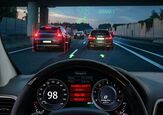

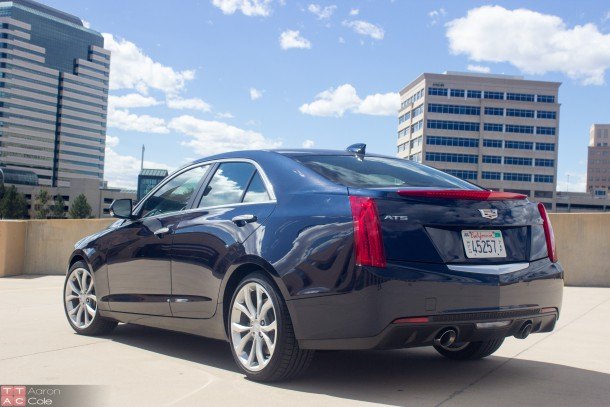






















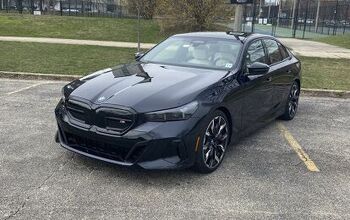
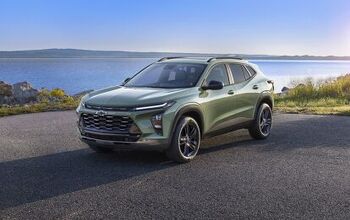
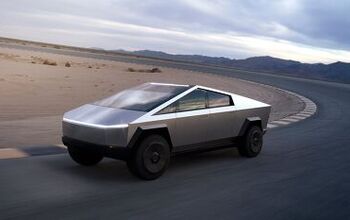
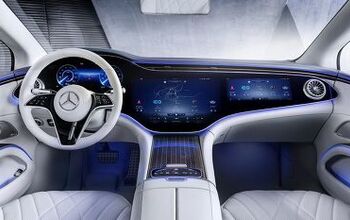


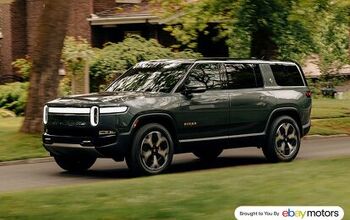

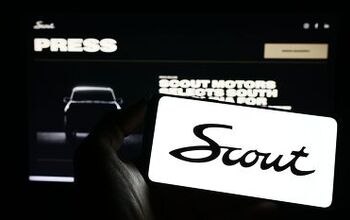

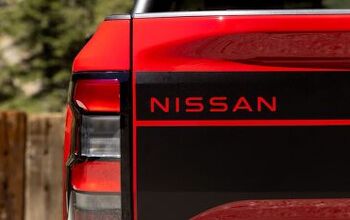

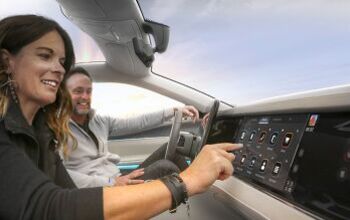
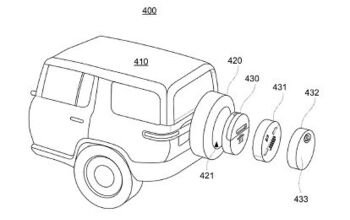
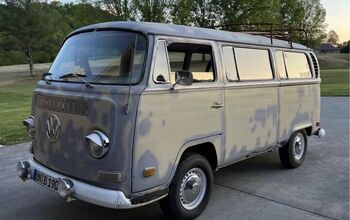

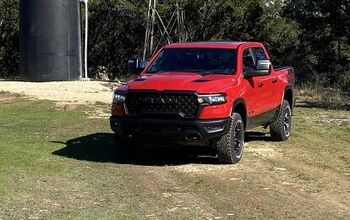
Comments
Join the conversation
can anyone with access to Manheim post MMR values for the 2016 ATS-V sedan?
I went and looked at an ATS and CTS today (MY 2014). Nice cars but they do seem to be missing something - that something being a reason why they cost what they do. I then looked at a lowly 528i (also MY 2014) next door at the Bimmer dealer. Got damn, why can't caddy's have that understated elegance and perception of quality. I say perception because while I've never owned a BMW, I've heard enough horror stories on this forum and others to stay away. I've also heard the BMW CPO warranty is garbage and excludes more items than it covers. I do a decent amount of easy-moderate DIY on my cars (Oil, brakes, fluids, plugs, minor repairs, etc.), but I'm not about to undertake, say, a VANOS rebuild. I also need a car that wont throw a CEL every other week when some another dang $500 sensor goes. Decisions, decisions.